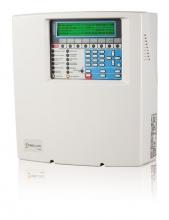How do addressable and conventional fire systems differ?
How Do Addressable And Conventional Fire Systems Differ?
There are two different types of fire systems:
• Conventional Range
• Addressable Range
Both types link devices, such as call points and fire detectors, to a main control panel. The main difference between the two is that an addressable fire alarm system allows you to pinpoint exactly which device has been activated, whereas the conventional system simply indicates the zone in which a device has been activated.
When deciding which system to select, factors such as the size of the building and types of fire risks are the main determining factors.
How do addressable and conventional fire systems differ?
Every device connected to the addressable system has its own unique address (up to 250 devices per loop). When a fire is detected, the detectors address is highlighted on the main control panel, indicating exactly which device has been activated.
This enables you to pinpoint the exact location of a fire so you can promptly action your evacuation plan. With addressable systems other services can also be monitored or controlled, including fire doors, sprinkler valves, switching off HVAC systems and many more. Addressable panels can also be networked together, thereby allowing very large sites to be monitored back to a central point such as a security room.
With a conventional system, there is no way of pinpointing the exact location of the fire, except by using ‘zones’. By wiring your building into different zones, you can get a general idea of where the fire is. For instance, if you have three floors, you could wire the first floor as ‘zone 1’ and the second floor as zone 2 and so on. This can be done up to a maximum of 20 detectors per zone. If a fire occurs in zone 1, you know that the fire is somewhere on the first floor. Because of this, in most cases you increase the time it takes to extinguish the fire.
Wiring differences…
With a conventional system, each detection zone will be connected to the control panel via a pair of wires. Each pair of wires is connected to a zone input in the control panel and connected to each device in that zonal area. At the last device on the line an End of Line (EOL) resistor is fitted, which monitors the wiring.
Addressable alarm systems connect devices using loop wiring, the cable is wired from the panel and returns to the panel. One cable with two wires connects all devices, including detectors, sounders, call points and output/ input modules, to the control panel. When both ends of the wire loop connect to the control panel, this is known as ‘A’ class wiring.
Each device has an individual ID so it can be programmed, and located easily. It can also drive outputs like mains relays and gas valves.
Which is more cost effective?
Conventional alarm panels cost a lot less to buy but are more expensive to install, especially in larger premises. This is because each zone of detectors that is being connected needs its own cable, meaning overall more cable is required and more man hours are needed during the installation phase.
With addressable systems, one cable loop will connect up to 250 devices. Additionally, addressable systems have a range of other facilities that can help save money. For instance, they allow alarm sounders to be wired on to the same loop cable as the smoke detectors.
Input devices for monitoring sprinkler flow switches and relays for homing the lift can be connected to the same loop cable.
Which is more reliable…?
The addressable panel is the more reliable of the two. It communicates to all detectors every seven seconds, 24 hours a day, performing self-diagnostics, whereas the conventional fire system lays idle and only operates when a fire detector senses a fire. The self-diagnostics enable the addressable system to determine when a detector is contaminated by dust and requires servicing.
Loop isolation modules are also used to separate devices on an addressable loop, this means that if one device becomes disconnected or faulty, it won’t disable the entire circuit. With a conventional system, if a wire has become severed, the whole circuit is out of action.
Recommendations
Functionally, the addressable fire alarm unit is superior as it can save time when detecting a fire and help prevent costly damage caused by the fire. It’s also cheaper and easier to install, with additional technology programming opportunities and the ability to access the system remotely over the internet.
In in terms of buying price, a conventional system is cheaper for smaller system under 4 Zones, and will meet the functional needs of smaller premises where a more sophisticated system may not be deemed necessary or relevant.
FireClass offers both Conventional and Addressable fire detection systems. Visit www.fireclass.com.uk to find out more.


